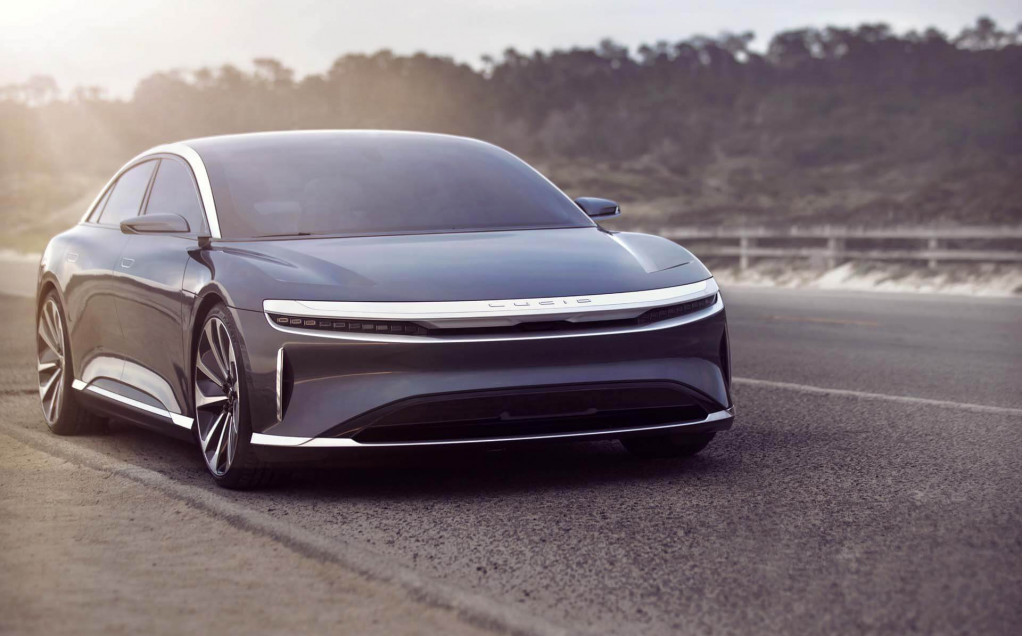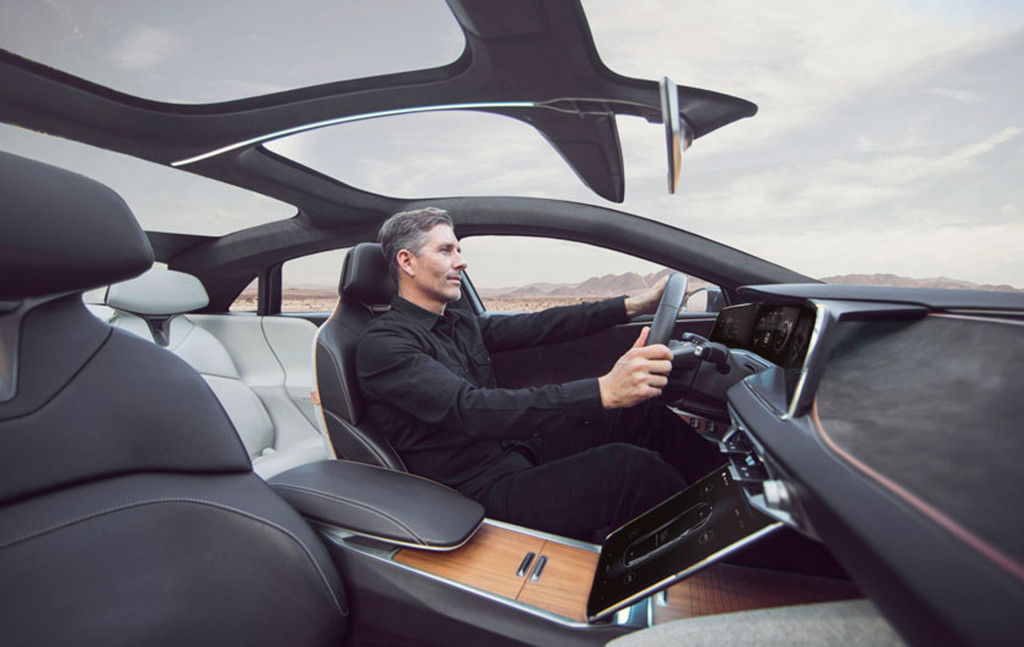The Lucid Air electric sedan that goes into production late this year won’t quite be the Lucid Air that the company had originally planned.
By all indications, from Lucid’s CEO Peter Rawlinson, that’s a good thing.
Portions of the company ground to a halt from 2017 until last spring, when a new round of funding from the Saudi Arabian Public Investment Fund kicked in.
While those years must have been nail-biters for Rawlinson, it gave his core engineering team the chance to revisit some of the key technology in the Lucid Air—especially the propulsion and battery systems, which he calls an area of core competence for the company.

Lucid Air
In an interview with Green Car Reports last month, Rawlinson said that versus the “alpha” cars—which the company teased for its top-speed tests—the "beta" cars have a new level of finesse (along with some Formula E lessons incorporated). “There’s not one part of that drivetrain that hasn’t really been transformed,” he said.
That transformation will include something that matters much to EV shoppers: an even higher rated driving range of 400 miles or more.
Rawlinson, already the original chief engineer of the aluminum-intensive Model S and the former chief engineer at Lotus, was no stranger to the idea of pushing for higher efficiency. But the team pushed beyond what they had at the alpha stage by revisiting virtually every detail concerning efficiency.
That includes not just the powertrain efficiency, but also the aerodynamics, the rolling losses—everything down to, as he pointed out, the choice of wheel bearings and the drag on the brakes.
Going after Tesla tech
“I would suggest that if there was one single metric of the potency of any one company’s technology in the EV space, that it’s efficiency,” Rawlinson said. “And what I mean by that is how many miles you can travel for a given amount of energy.
“And in that, you start seeing that one company, a California company, is ahead of all the rest by a very, very long margin,” Rawlinson said, and quickly added: “We believe we are ahead of everybody. From the data we have we believe we’ll come out with a car that’s not just 400 mile range at an EPA five-cycle (the way EPA range is determined), but a 400-mile range at highway speed.”

Lucid Air
Among the bigger decisions since Lucid’s early alpha cars: They’ve switched from induction motors to permanent-magnet motors. And they’ve increased the voltage from the previous 400 volts “significantly.”
Rawlinson didn’t want to disclose exactly what voltage it’s running, but “we’ve gone to a high voltage,” he said. (Ed note: Based on hints from Rawlinson, we expect the vehicle’s system voltage to be in the vicinity of 900 volts).
High-voltage is an efficiency play, not a charging one
Rawlinson said that high voltage comes with a number of advantages, but there’s a common misunderstanding that a car set up for higher voltage will charge faster. “Each cell sees about 4.2 volts when it's being charged,” he explained. “The rate of charge of an individual cell and therefore the whole pack is actually independent of the voltage of the car; it actually doesn’t matter.”
The true advantage of higher voltage is its ability to downsize some key components, raise their efficiency potentially, and also cooling and efficiency losses, he said.
“If you double the voltage you halve the current; and if you halve the current you quarter the heating losses in the circuitry. And therefore in the cables that connect to the car there’s a quarter of the heat, so you don’t have to cool those cables, and there’s a quarter of the heat in the busbars in the battery. "
And that means less power used by the cooling system to keep it all cool. Again, the result is better efficiency—and more range.

Lucid Air prototype during high-speed test at Transportation Research Center, Ohio
“When you floor a powerful car like the Lucid Air, you can lose 200 horsepower just in heating the battery pack—unbelievable—and it’s sort of in minimizing those losses that we’ve made some real breakthroughs,” Rawlinson said. “Not just because of the high voltage—that isn’t a breakthrough, but with the way we’ve (laid out) our battery pack, which I believe is unique, we’ve really minimized those losses.”
Part and parcel with Rawlinson’s laser-focus on efficiency is his aim to keep the weight of batteries to a minimum for that 400-mile range.
“The smart way to create range is with the smallest battery pack possible,” he said. Lucid plans to use the same 2,170-format cells as the Tesla Model 3 and Model Y “because of the economics,” and Rawlinson says that it’s “signed, sealed, and settled with a household name.”
Going for range the “smart” way
The one thing Rawlinson isn’t sold on for economics is the commoditization of platforms and interchangeable off-the-shelf EV components. “There’s a symbiotic relationship between motor, inverter, software, transmission, and battery pack,” and when these things are mismatched, he argues, you see “a dumb way to create a lot of range...by having a humongous battery pack.”
“We’re seeing that in some of the newcomers to this space,” he said. “They’re heavy, they take up a lot of space, and they’re very expensive.”
Expect to get a much deeper download of Lucid Air specs and details at its New York Auto Show reveal in April. Or, with a preview Thursday for reservation-holders, perhaps sometime sooner.
